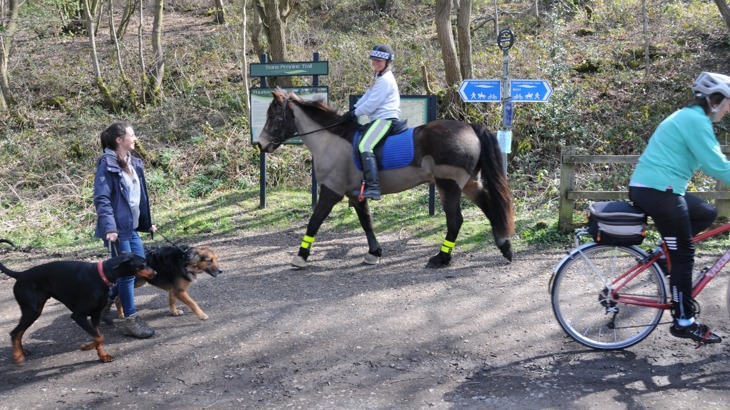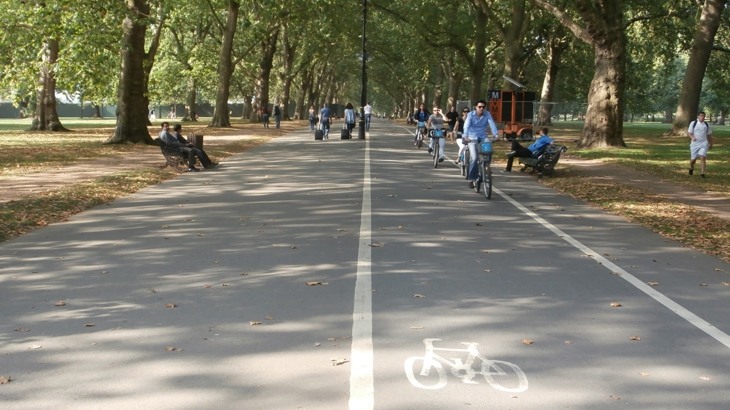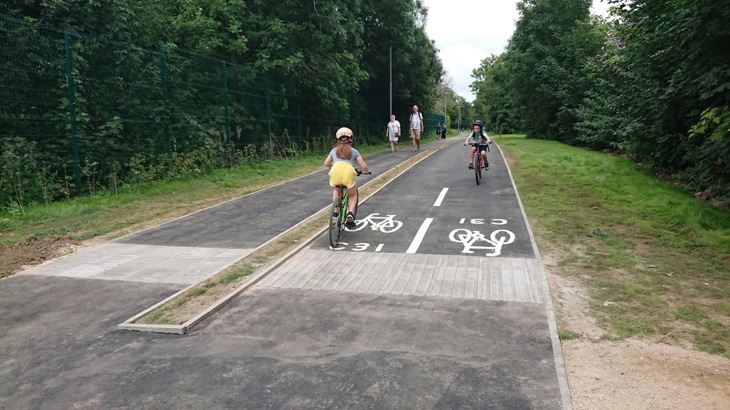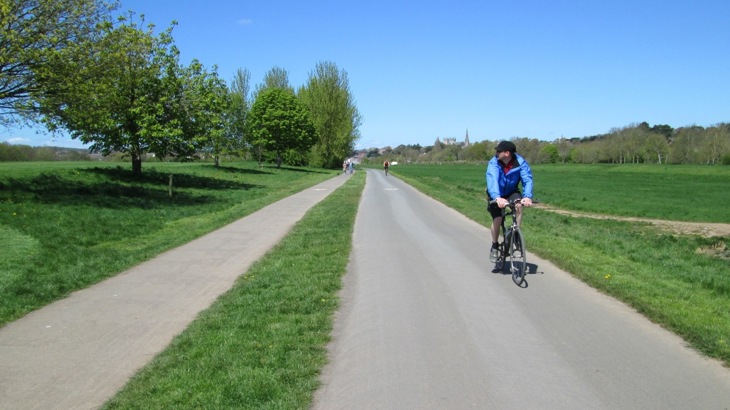Sharing of paths is part of the Sustrans traffic-free routes and greenways design guide. It covers understanding where it is applicable to share and separate paths and good separation techniques.

Key principles
- Understanding where it is applicable to share and separate paths
- Good separation technique
4.1 When is separation required?
4.1.1
Experience shows that paths with no separation can function well with minimal conflict occurring. But this is dependent on users being provided with enough width. Providing enough width enables users to interact in a manner that does not detract from their quality of experience.
Separated routes can be beneficial when applied to certain situations. Particularly where the route serves many functions.
Each situation should be considered on a case-by-case basis. Designers should think their decisions through rather than defaulting to a particular approach. They should also pay attention to how either approach could affect inclusivity. The table below summarises the advantages and disadvantages of each type of provision:
4.1.2
In general, where there is known to be, or anticipated to be, high levels of usage by any particular user group, it is desirable to provide separation. Where there are likely to be issues with people riding bikes at speed, separation is desirable.
This may be relevant where there are long straight alignments or downhill gradients along a route. Designers should consider the following when deciding whether to install a shared or separated path.
Shared or Separated Path
High volumes of any particular user group should not be used alone to determine whether a path should be shared or separated. Designers must also consider:
- Inclusivity – Would a particular approach be more appropriate for ensuring that the route is accessible to all?
- The desire lines of each user group – Do they cross or conflict in any way?
- The volumes of each user group – are these predictable during certain times of the day?
- The needs of more vulnerable route users – Does the route pass near schools or medical/health facilities? Is there likely to be a high composition of vulnerable users on the route at certain times of day?
- Are there any interfaces with the highway network where movements of each user group will need to be controlled?
4.2 Separation treatments
4.2.1
Key to the provision of effective separation is providing enough width for each element of a route. Where there is insufficient width to provide a separated path, an unseparated shared-use path is likely to function better.
4.2.2
Separation can be created by distinguishing between two sides of a path with a painted white line. Research has shown that white-line separation is ineffective in ensuring a high degree of compliance. As such, this approach is not recommended. The image below shows an example of separation using a white line:

Path separated using white-line markings, Hyde Park, London.
4.2.3
Where separation is considered appropriate, the following treatments are recommended. It may be appropriate to combine some of these treatments:
- Separation with a margin
- Separation with a level difference
- Separation with differential surfacing
- Separation with a raised delineator strip.
In addition to the method of separation, consideration should be given to visually impaired users. A layout that aids the movement of these users must be provided. Tactile paving is a tool designers can use to help achieve this.

Path separated using grass delineation strip, New Malden Raynes Park, London.

Path separated using grass delineation strip, Exeter.
4.2.4
The maintenance of a route should not be overlooked when considering separation types:
- Ensure that surfacing types are easily maintainable and provide longevity of use for the path. This is an important consideration when more than one surface type is used as a form of separation.
- Ensure there is adequate longitudinal and lateral (cross) fall. This applies to a simple shared path or a path separated by a level difference. Where this is not possible, drainage should be used.
4.2.5
Territorial behaviour can be an issue on separated paths. Therefore, the design should ensure that any separation indicates the space within the path that is to be used by each user group.

